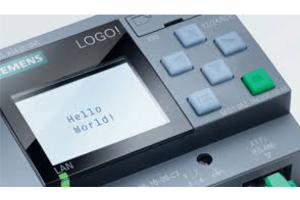
In the rapidly developing industrial era of the current world, accuracy and efficiency are the two most pressing requirements. Any machine or device that we employ in industries is motor-driven to make it efficient. Ranging from pumps and conveyors to robots and lifts, motors power the very backbones of industries. But motor precision and motor control for safety have remained a Herculean endeavor to date. Motor control using PLC emerges as the solution to that.
Programmable Logic Controllers (PLCs) have raised the use of motors by industries to a completely new level. The days when organizations were depending on traditional manual methods are now a thing of the past, and they are implementing PLC-based control to improve performance, improve productivity, and increase reliability. In this article, we will explain how PLCs enhance the accuracy of motor control, what advantages they provide, and how industries these days cannot even think about their functioning without them.
Understand the Basics of Motor Control
We will first understand what motor control is, and then we will study PLCs. Motor control is the method of making a motor turn on, turn off, and change speed, torque, and direction. Motor control can be extremely basic or complex depending on the application.
For instance:
A fan may require simple on/off.
A robot arm for automotive manufacturing requires high accuracy with very precise speed and direction.
The conventional way of motor control was through hand switches, contactors, and relays. Though well-functioning then, they were non-programmable and imprecise. They further had shorter lifetimes, which caused them to malfunction and fail.
Why PLC for Motor Control?
A PLC is a computer on the factory floor that is programmable and can be used to control processes and machines. It receives input from sensors, processes it, and thereby controls machines such as motors.
So how is motor control with PLCs improved, then? Just that: PLCs are more accurate, more flexible, and more reliable. Unlike antiquated systems of the past, a PLC can be programmed to control a different type of motor, have parameters set on the fly, and monitor real-time information.
Let us consider an example of a factory where hundreds of motors are operating. It would be nearly impossible to control them all in an efficient way without a PLC. But with a PLC system, any number of motors can be controlled by a single program, which is much more appropriate.
Key Advantages of Motor Control using PLC
1. High Accuracy
The biggest benefit is precision. PLCs are programmed to handle input signals with extremely high speed and precision. In the context of motors, it implies controlling movement, torque, and speed with high precision. Precision as demanded by such industries is impossible with traditional techniques.
2. Programming flexibility
One of the benefits of employing PLCs is that they can be reprogrammed very easily. If something in the operation of the motor has to be changed, the program can be recreated without having to make modifications to the whole setup. It is cost-effective and time-saving.
3. Real-Time Monitoring
PLCs can be used to store real-time motor data. These include speed, voltage, current, and temperature. Through them, the operators can respond in time before the system fails. This also enables predictive maintenance.
4. Less Downtime
Earlier, there were surprises in the form of system failure. But systems controlled by PLCs are less prone to system failure. They only inform us where there is a fault, thus saving on repair time and cost.
5. Energy Efficiency
Motors operate only when needed and at top speed with PLC control. This avoids power wastage. Finally, this translates into astronomical figures saved on electricity bills.
Applications of PLC in Motor Control
PLCs are used in motor control in nearly all industry segments today. The typical applications are:
Factory production lines: For the control of conveyor belts, robot arms, and machine tools.
Water treatment plants: For pump and blower control.
Automotive sector: For control of assembly lines and painting robots.
Textile sector: For accurate speed control of spinning and weaving machines.
Food and drinks: For accurate packaging and processing.
Regardless of the sector, the need for accuracy makes motor control through PLC a fundamental aspect of contemporary production.
Example: How PLC Enhances Motor Control
The belt must run at different speeds according to the size of the products.
It must, on some occasions, run to the extent that it needs to be marked.
It should, at other times, operate without a break.
Hand operation is bound to cause a delay, mistake, or even product breakdown.
The motor can be made to auto-adjust speed, halt precisely at positions, and smoothly accelerate by the use of a PLC. Sensors provide feedback to the PLC, and proper instructions are provided by the PLC to the motor. The consequence is higher accuracy, reduced error, and smoothness.
Types of Motor Control with PLC
PLCs support various types of motor control according to application:
On/Off Control—For basic applications such as pumps and fans.
Speed Control—PLCs, combined with the assistance of Variable Frequency Drives (VFDs), can control motor speed in a stepwise and smooth manner.
Position Control—Robotic motors need to be moved to predefined positions. PLCs make this possible by providing feedback loops.
Torque Control—Torque control is an important feature in heavy industry. PLCs assist in delivering safe and efficient levels of torque.
This diversity makes the PLC the most chosen device for the majority of motor applications.
Conclusion
Motors are the lifeline of industries, and precision-based motor control is the demand of the times. Precision, reliability, and speed are what the world demands, and anything less than this cannot be endured. Motor control using PLC has therefore become the industry standard.


